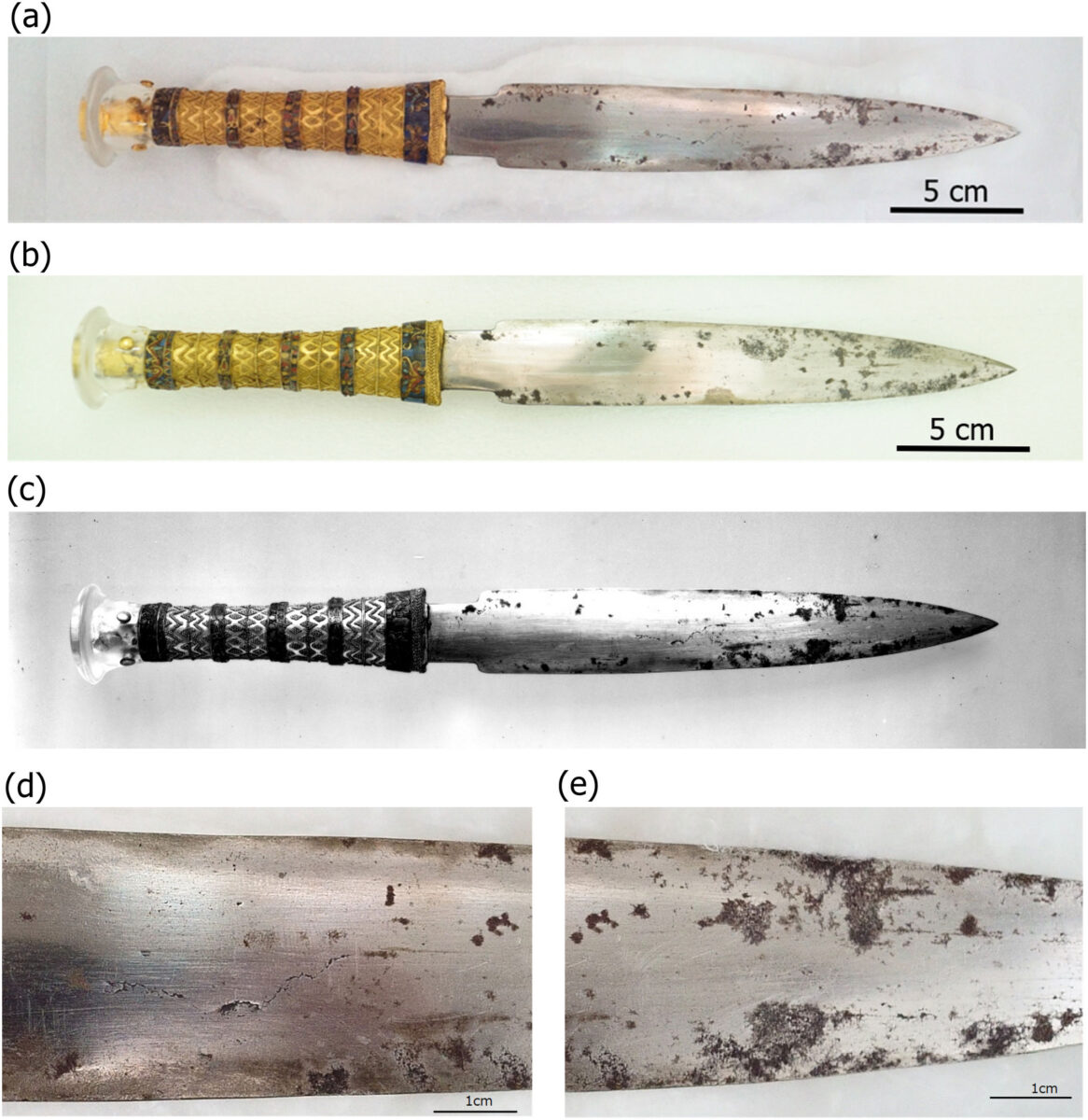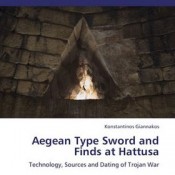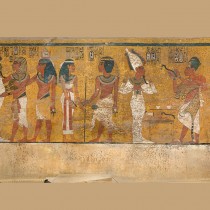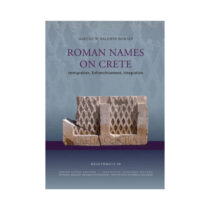Tutankhamun’s iron dagger, known as crafted of iron ore taken from a meteorite, reached Egypt as an import from the ancient Empire of Mitanni, according to researchers from Japan’s Chiba Institute of Technology (CIT), who published an article in the journal Meteoritics & Planetary Science.
The dagger, both a rare evidence for the early use of iron and an impressive example of ancient metalworking, made headlines again in 2016 as its material was shown to “originate from space”. In February 2020, CIT researchers reached the Egyptian Museum in Cairo to obtain new results concerning the dagger’s material and craftsmanship. According to their published research paper, they conducted nondestructive and noncontact chemical analyses of the meteoritic dagger blade at the Museum. For comparison, they analyzed the Shirahagi iron meteorite, the source of the Japanese historical sword Ryuseito which is housed in Toyama Science Museum; analysis in Toyama took place in the same way and using the same analytical instrument and techniques as in Cairo.
While confirming iron meteorite (octahedrite) as the source of the dagger’s iron, they also noted that something interesting was also going on with the dagger’s gold handle, or hilt. In fact, the hilt, which also bears decoration with semi-precious stones and granulation, contained traces of calcium, which is unexpected with gold. The hilt’s ornaments had been attached with quicklime, a material which did not reach Egypt before the Ptolemaic period, instead of gypsum, the material normally used in Pharaonic times. All these elements show that the dagger might have been manufactured outside of Egypt, but where exactly?
Unlike Egypt, the populations of Anatolia are known to forge iron daggers from octahedral meteorites already from at least around 2300 BC, with the oldest such dagger excavated at Alacahöyük, Turkey. Anatolia’s southeast end formed part of the Empire of Mitanni, whose ongoing diplomatic relations with Egypt of the 18th Dynasty are well-documented through 14 letters between Egyptian and Mitannian royalty, surviving in the Amarna Letters, the diplomatic correspondence archive found in the Palace of Tell el Amarna, where Tutankhamun’s reign probably started. In fact, two of these letters (designated EA 22 and EA 23), both sent from the Mitannian King Tushratta to Tutankhamun’s grandfather, Amenhotep III, contain the description of iron-blade daggers with elements of gold and precious materials. Despite none of these descriptions fit with Tutankhamun’s dagger, the Mitannian King had access to not one but two iron daggers, in an era where iron was a rare material, and Anatolia was part of Mitanni at the time of Amenhotep III and Tushratta. The above elements make researchers suggest that Tutankhamun’s iron dagger might have come as an elite import from Mitanni during his grandfather’s time. “The Ca- bearing gold hilt hints its foreign origin, possibly from Mitanni, Anatolia, as suggested by one of the Amarna letters saying that an iron dagger with gold hilt was gifted from the king of Mitanni to Amenhotep III, the grandfather of Tutankhamen” they state. “At that time in Egypt, iron was considered an element that fell from the sky on rare occasions and was about 80 times more valuable than gold. Tutankhamun probably inherited his grandfather’s iron dagger and it was placed in his tomb when he died at a young age.”, adds team leader Takafumi Matsui, who is also the president of the Chiba Institute of Technology.
No matter how impressive, however, the theory of the CIT team has already started to receive criticism. In her personal blog, archaeologist Andrea Sinclair, an expert on hybrid iconography and interconnections in Tutankhamun’s era, states that “most of the archaeologically related claims from this paper are either hyperbole, incorrect or based on out of date theories”, as, while “the chemical analyses employed by the authors were professional and thorough, however the conclusions drawn from this data are flawed and ignore the broader historical and archaeological context”. As Sinclair observes, Mitanni was not in Anatolia, meteoric iron sources have been documented in Egypt’s Kharga Oasis, and extensive and multifold contacts between states in the Late Bronze Age allowed for a broad reach of technologies -so that it is impossible to claim a particular place of origin for the dagger. Also, this dagger is a variation of a recorded Egyptian type, while it is highly unlikely that a Pharaoh would have been buried with a foreign gift. It is thus impossible to associate Tutanhamun’s iron dagger with Mitanni; at least for the time being.





